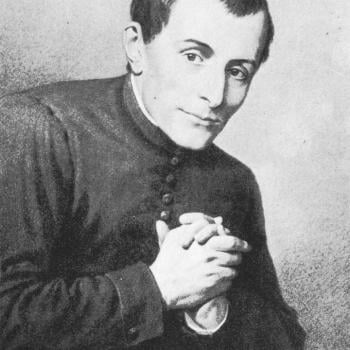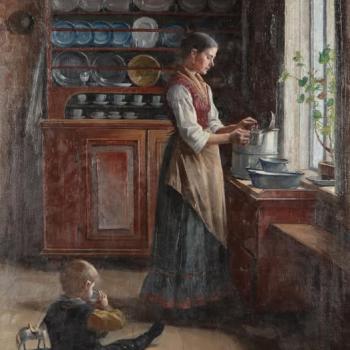The life of the Christian church is weaved from a rich tapestry of threads. Some threads were added by singular brilliant minds that were able to see beyond what was offered to them and were empowered to craft something new. Other threads were forged in councils of leaders who gathered to confront the challenges of their time and to fortify the ground upon which they stood so that the life of the faith might be preserved. A third, less exalted, group of fibers are the gift of the worshiping community itself. From disparate corners of the Roman Empire communities took upon their lips the task of making a thankful memorial for Christ with a subtle restyling of prayers to fit their culture and concerns, not with the coordinated efforts of a systemetition, but with the natural adaption of an organism. This liturgical theology, therefore, must be known in context and with an understanding of the seeds from which its own germination and flowering took found their genesis. Although there is only a fragmentary history of the earliest liturgical landscapes the following five prayers offer some of the best glimpses we have into early Christian liturgical threads.
Jewish prayers – The influence of the Jewish social and cultic rites upon the Christian expressions of thanksgiving and memorial cannot be ignored. The Jewish community, after all, provided the rich narrative and symbolic soil from which the earliest Christian communities emerged. Among the numerous influences Jewish life had on the Christian community, the one that seems to have impacted the liturgical (particularly Eucharistic) prayers of the Christian community is the Jewish Table blessing known as the Birkath ha-mazon. It consists of three short paragraphs, beginning respectively “Blessed are you , Lord our God , ” “We will give thanks to you ,” and “Have mercy on us.” This prayer provided the early Christians not only words that they would employ in their own prayer but also the three fold structure that would form the underling bones of the Eucharistic anaphora. One can also see the foundations for Christian sacramental theology emerge in this table prayer. According to Enrico Mazza the Birkat ha-Mazon tells of the meaning the meal has in Judaism stating, “The land was given to the Jewish people by Yahweh as a pledge of the covenant. In the rite for the contracting or renewal of the covenant, the eating of the produce of the country is an acceptance of the covenant.”
Didache – This early church manual appears to have been written contemporaneously with some of the books of the New Testament canon. In it we glimpse the liturgical life of an Antiochene Christian community at the end of the first century. Its accounts of the sacred meal indicate a dependence on Jewish table prayers. Although the book doesn’t offer precise ordo, or a complete anaphora the emergence of the institution narrative as a touchstone for liturgical celebration and a distinctive Eucharistic theology emerge. It also incorporates the Jewish text of Sirach 36:11-14 to articulate the community’s understanding that the meal was a location where the people of God are gathered into one.
Justin Martyr – Justin Martyr, an early Christian philosopher, offers a few glimpses into the liturgical life of the church. In his writings we see the outline of the liturgy as he makes a defense of the Christian practices against those who spread insidious rumors about the Eucharistic gatherings.
Apostolic Tradition – The apostolic tradition provides for scholars another glimpse at the Eucharist. In this document is recorded the prayer of two celebrations of the Eucharist (one after ordination the other after a baptism). Although the origins of this text are still highly disputed among liturgical scholars, the impact of this text is beyond question. When the two accounts are taken together one can form a cursorary ordo:
1 . The prayers 2.The kiss of peace 3. The offering (in baptism, with milk a n d honey, and water) 4. The anaphora (including blessings of produce) 5. Discourse by the bishop, “giving a reason for all these things” 6. The fraction 7. The distribution.
Strasbourg Papyrus – This early text contains an early version of the liturgy of St. Mark. This text also shows clear influence of Jewish Table prayers helping scholars date it to c. 200 CE. There is not much that remains of the prayer but there is sacrificial language stating, “we offer the reasonable sacrifice and this bloodless service, which all the nations offer you.” This passage also shows the cosmic dimension of the prayers which see all people as potential participants in the heavenly kingdom.












